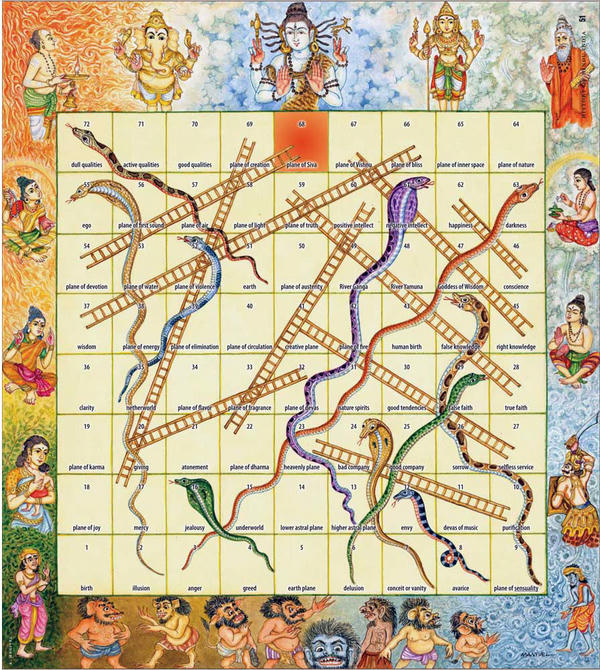Snakes and Ladders
The Western children’s game Snakes and Ladders, or Chutes and Ladders, comes from the Indian game for adults called Gyan Chaupar, the “Game of Knowledge.” Gyan Chaupar teaches the Hindu spiritual path to moksha, which is liberation from reincarnation. There are 72 numbered squares on the board listing various virtues, vices, states of consciousness and planes of existence. The ladders start from squares with virtues, such as devotion, and move the player up the board. Snakes are found on squares of vices, such as jealousy, and take the player back down the board.§
Play begins at square one in the lower left corner. In the old days, the player threw six cowrie shells on the floor. The number of shells that landed upright indicated the number of squares to move forward. Nowadays dice are used. If the player lands on a ladder, he jumps to the square at the top of the ladder. If he lands on the head of a snake, he slides back down the snake to a low square. The object of the game is to land exactly on square 68, the center of the top row. This square represents liberation from rebirth and entry into heaven. If he lands past 68, he continues to play until he reaches 72, which takes him back to 51 for another try. The game is an entertaining way to learn about making progress on the spiritual path. By cultivating a virtue, such as devotion, one advances. By falling prey to egotism, one goes backwards.§
Play the game online or download the board and full instructions at www.hinduismtoday.com/resources/snakesandladders.§

